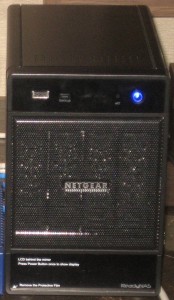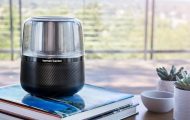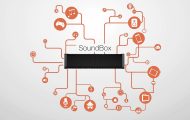The small data-replication cloud
Whenever the “personal cloud” is talked of, we think of a network-attached storage device where you gain access to the data on the road. Here, the cloud aspect is fulfilled by a manufacturer-provided data centre that “discovers” your NAS using a form of dynamic DNS and creates a “data path” or VPN to your NAS. Users typically gain access to the files by logging in to a SSL-secured Web page or using a client-side file-manager program.
But another small data cloud is often forgotten about in this class of device, except in the case of some Iomega devices. This represents a handful of consumer or small-business NAS units located at geographically-different areas that are linked to each other via the Internet. Here, they could synchronise the same data or a subset of that data between each other.
This could extend to applications like replicating music and other media held on a NAS to a hard disk installed in a car whether the vehicle is at home, at the office or even while driving. The latter example may be where you purchase or place an order for a song or album via the wireless broadband infrastructure with the content ending up on your car’s media hard disk so it plays through its sound system. Then you find that it has been synchronised to your home’s NAS so you can play that album on your home theatre when you arrive at home.
What could it achieve?
An example of this need could be for a small business to back up their business data to the network-attached storage device located at their shop or office as well as their owner’s home no matter where the data is created.
Similarly, one could copy their music and video material held on the main NAS device out to a NAS that is at holiday home. This can lead to location-specific speedy access to the multimedia files and you could add new multimedia files to the NAS at your holiday home but have this new collection reflected to your main home.
Here, one could exploit a larger-capacity unit with better resiliency, like the business-grade NAS units pitched at small businesses, as a master data store while maintaining less-expensive single-disk or dual-disk consumer NAS units as local data stores at other locations. This setup may appeal to businesses where one location is seen as a primary “office” while the other location is seen as either a shopfront or secondary office.
This kind of setup could allow the creation of a NAS as a local “staging post” for newly-handled or regularly-worked data so as to provide a resilient setup that can survive a link failure. In some cases this could even allow for near-line operation for a business’s computing needs should the link to a cloud service fail.
User interface and software requirements
This same context can be built on the existing remote-access “personal cloud” infrastructure and software so there is no need to “reinvent the wheel” for a multi-NAS cloud.
Similarly, users would have to use the NAS’s existing management Web page to determine the location of the remote NAS devices and the data sets they wish to replicate. This can include how the data set is to be replicated such as keeping a mirror-copy of the data set, or contributing new and changed data to a designated master data set or a combination of both. The data set could be the copy of a particular NAS volume or share, a folder or group of folders or simply files of a kind.
The recently-determined UPnP RemoteAccess v2 standard, along with the UPnP ContentSync standards could simplify the setup of these data-synchronisation clouds. This could also make it easier to provide heterogenous data clouds that exist for this requirement.
But one main requirement that needs to be thought of is that the computer systems at both ends cannot collapse or underperform because the link fails. There has to be some form of scalability so that regular small-business servers can be party to the cloud, which may benefit the small-business owner who wants to integrate this hardware and the home-network hardware as part of a data-replication cloud.
Hardware requirements
A small data cloud needs to support cost-effective hardware requirements that allow for system growth. This means that it could start with two or more consumer or SME NAS devices of a known software configuration yet increase in capacity and resilience as the user adds or improves storage equipment at any location or rents storage services at a later stage.
This could mean that one could start with one single-disk NAS unit at each location, then purchase a small-business NAS equipped with a multi-disk RAID setup, setting this up at the business. The extra single-disk unit could then be shifted to another location as a staging-post disk or extra personal backup.
Conclusion
What NAS manufacturers need to think of is the idea of supporting easy-to-manage multi-device data-replication “personal clouds” using these devices. This is alongside the current marketing idea of the remote-access “personal cloud” offered for these devices.




